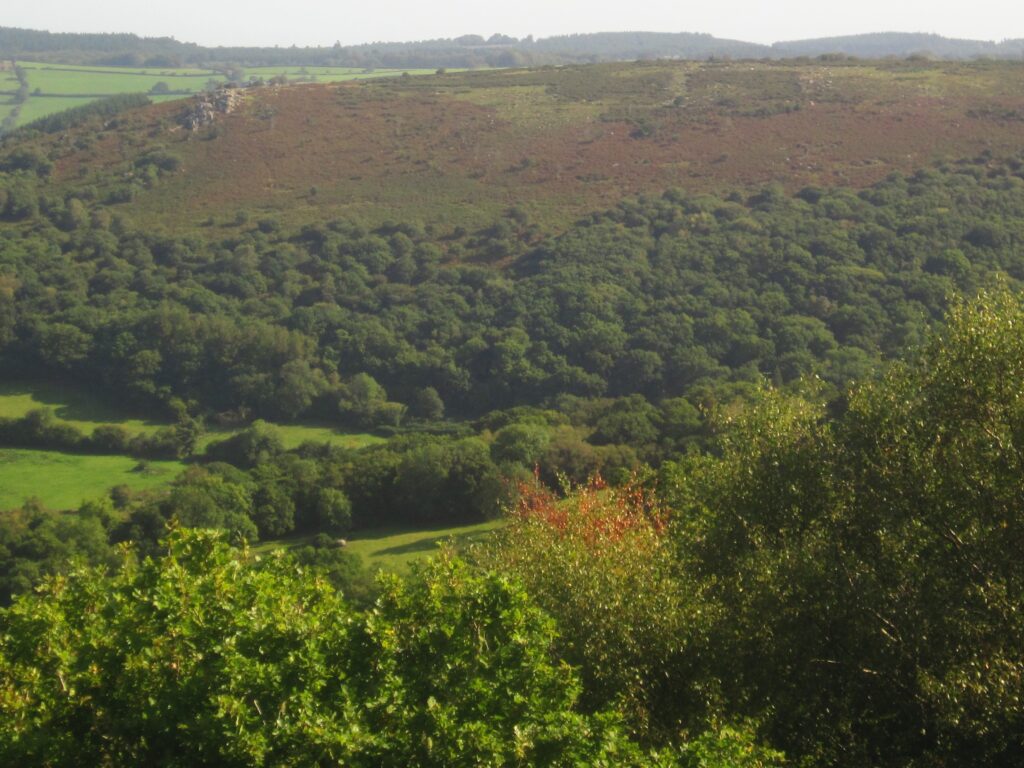Bringing Woodland diversity to pasture fields.

I read a lot about rewilding and I hear a lot more about it. Usually the theme is planting trees or allowing trees to regenerate naturally in uplands and pasture land. I don’t intend to go into the rights and wrongs of converting these areas to woodland, but to focus on one aspect of the mechanics of the process.
Whilst some areas have regenerated well under their own steam so to speak, with some sensitive grazing, or protection from grazing, other areas have proved reluctant. In moorland areas where purple moor grass has become dominant, and in pasture where rye grass has a stranglehold on everything regeneration can be slow. This of course would not be a problem if woodland cover were not a vital part of resolving a global environmental emergency and a mass extinction. But we are where we are, we have little time to spare and so land managers have to act as the catalyst for accelerated change.
We can of course plant trees already nurtured in nurseries, preferably in an apparently random way, to get things started, and hope that self- seeding will increase tree cover going forward, and no doubt it will, but it may be surprisingly slow. Rye grass of the agricultural variety is a tough nut to crack, and Molinia is similarly difficult stuff. There are other issues too, true woodland has a complex soil ecology all of its own, and tree roots need that ecology to maximise tree growth. Without it regeneration is likely to be much slower than it would in say a woodland clearing.
So to solutions. Well hedgerows are likely to have similar soil ecology to woodland, so we can perhaps steadily regenerate the pasture by working out from the hedgerows and woodland edges, a few metres at a time. This might produce a reasonable woodland but its still a slow way of going about things.
If we were trying to change rye grass to flower rich pasture, we would first sow yellow rattle to weaken the grass and let the flowers come through. It seems to me that if we could scatter enough leaf mould onto the pasture before or during planting it would assist in suppressing grasses and start to create the absent ecology. Tree leaves decomposing tend to be good at suppressing other species. It could also randomly scatter seeds mixed up in the leaf litter.
Well that’s all well and good but we can’t go digging up ancient woodland (unless you work for HS2) to take away the leaf litter, we can’t destroy one wood to create another, so where is this leaf litter coming from?
Every Autumn huge amounts of dead leaves fall into our roads, they wash downhill, and gather in huge quantities at the bottom, often clogging drains and causing localised flooding. These leaf heaps are left for some months rotting and getting wet, as the council only wants to sweep them once. These heaps will hold lots of seed from trees and hedgerows, and plenty of fungi and bacteria typical of a woodland ecology. It seems to me that this nuisance debris on the roads could be utilised as a top dressing and seed source for areas destined for regeneration. It might be negotiated with the local authority to obtain it, or volunteers could just take pick-up trucks to known locations where such heaps amass (I have one round the corner from me) and just harvest it themselves, saving the council having to process it.
Now there are possible downsides, this may be a way to spread disease, so I think it would be something to do in a very local way, using leaves from within a few miles radius of the planting/ regeneration site to mitigate this.
I’m not an expert, so I’m happy to be shot down over this approach, by any knowledgeable expert, and I’m keen to hear from people who have tried or experimented with this approach, or to hear how other people deal with the problem.
Over to you.

